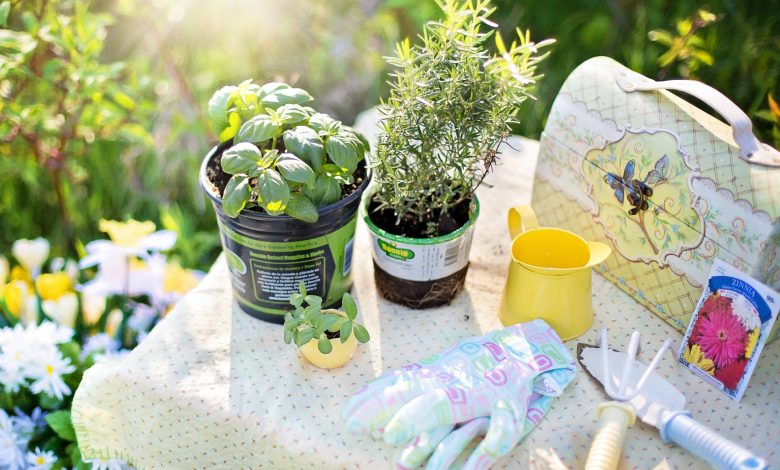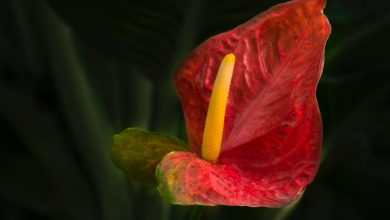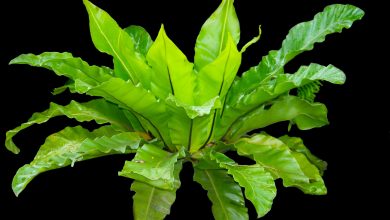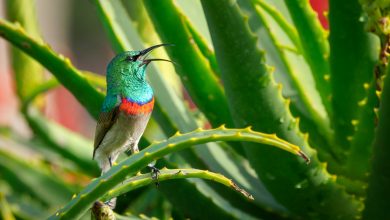Best Medicinal Plants To Grow In Your Garden

What better way to improve your health and treat your ailments than with herbs which come fresh out of your own garden? Putting together a herb garden has become increasingly popular over the years. And even if you’re not looking for the medicinal benefits of the herbs, some of them beautifully complement the layout of your garden and may even repel bugs or other pests.
Growing your first medicinal herb garden can be difficult if you don’t know where to get started with some of the plants listed below. Not every nursery is going to carry certain seeds, and plants like passionflower are often in limited supply.
But if you’ve got the seeds and proper nutrients available at your local gardening store, or if you’re able to get them online, growing your own medicinal herbs is definitely one of the coolest ways to garden. And these are some of the best herbs and plants to try it with.

Calendula (Marigold)
You’ve probably grown marigolds in your flower garden before. But did you know that your calendula officinalis actually has a few medicinal benefits? Plus, Calendula is one of the easiest medicinal herbs to grow in your garden.
Calendulas are an annual flower, meaning they only bloom once a year when they’re in season. In some zones, these flowers may even bloom throughout the winter. They typically grow best in soil with a moderate moisture level, and the flowers will flourish when the plant is in full sunlight. After your marigolds have bloomed, it’s best to harvest the flowers every two to three days to ensure the plants continue flowering throughout the season. Unfortunately, if the plant goes to seed, they will typically stop flowering right then and there.
After harvesting your flowers, you should immediately dry them. You can actually put them to use while cooking or even process the flowers to make medicinal creams or tinctures. The oils in salves that are often produced using calendula are great for wounds, rashes, burns, and even for healing dry skin. The cream can also be incredibly soothing when applying to a bug bite.
And we mentioned earlier that you can even cook with marigolds, didn’t we? Just toss some of the flower petals into your favorite salad, or add them to your favorite tea. When eaten, calendulas are well-known for their ability to boost the immune system, help induce menses, relieve sore throats, and even heal stomach ulcers.
Without any doubt, calendula is an incredible plant and would make an excellent addition to your garden – especially while it is in season.

Passionflower
Traditionally passionflower has been used to treat anxiety, insomnia, and even to provide pain relief. Don’t just go growing any passionflower saplings into your garden though; the most beneficial one is called passiflora incarnata, or P. Incarnata for short.
Scientists have confirmed the calming effects of passionflowers come from the plant’s natural ability to increase GABA (Gamma-aminobutyric acid), which is often found in the form of a supplement used to help one relax by lowering brain activity. Increasing GABA in the brain is also known to improve memory.
Besides the benefits, the vine which it grows on also yields a delicious fruit, and the flowers have a wonderful aroma. This plant can be difficult to grow – in zones 8-11, the vine is a perennial, and in zones 6 – 8, the vine will die during the cold season and resurface in the early spring.
Growing a passionflower can be a lot of work because its vine is tough and is known as an invasive creeping plant, which can make it difficult to keep tidy. But as long as it’s pruned and the flowers and fruits are harvested, the vine should continue to grow throughout its entire season.
Passionflower is best served in the form of tea or a tincture to receive the fullest extent of its medicinal and nutritional benefits. Passionfruits are also incredibly rich in antioxidants and pair well with other tropical fruits like mangoes or bananas.

Echinacea
Echinacea has almost become a household name over the years. If you’re familiar with medicinal herbs, echinacea is likely one of the first ones you’d ever heard of. The plant is also known as purple coneflower, and several species of the plant are often used as herbal supplements and medicines all across North America and Europe.
So why is it so cool? Echinacea can help in fighting off a cold or the flu. It also aids in controlling blood sugar, reduces the risk of certain cancers, lowers blood pressure, and helps fight inflammation. Pretty cool, huh?
These coneflowers are a resilient perennial which grows best in zones 3 – 9 or hot and dry climates with rich, well-drained soil. Similar to passionflower and calendula, echinacea is best maintained by pruning the flowers, which will repeatedly bloom throughout summer. Because of their resilience, it’s easy to grow purple coneflowers from stem cuttings if you don’t have seeds available.
The best teas and extracts come from the harvested flower petals and leaves. For fast harvesting, cut the stem below the leaves. Don’t worry, everything will grow back! Afterward, you need to dry out your petals and leaves. The most beneficial part of the plant is the root, and although it might seem frustrating to harvest the entire plant only to start over again, it’s easy enough to plant some new stem cuttings to speed up the process. Once your echinacea is dry, you can begin making teas, balms, and extracts to chase away those nasty winter colds and cases of flu.

Ginseng
Ginseng has been a staple of Chinese medicinal herbs for thousands of years. It was initially said to improve cognitive ability, increase vitality, reduce stress, and has both anti-inflammatory effects and plenty of antioxidants to boot. You can either grow the Chinese red ginseng, or you may potentially want to opt for the common American “Panax” ginseng.
If you plan on growing any kind of ginseng, it’s best to start right away. The reason for this is that it could take up to 18 months for the seeds to germinate, and a minimum of five years before it’s ready to be harvested. Asian ginseng is best grown in zones 5 – 9, while its American cousin is best grown in zones 3 – 7. And while you’re at it, keep in mind that the soil you use to grow ginseng should be rich in moisture.
When your ginseng has finally reached maturity, it can be harvested in the fall. Typically, the root is known to carry the medicinal benefits of ginseng, but the berries contain the same bioactive ingredients as the root in higher concentrations. Ginseng can be chewed, boiled into tea and soups, or even added to stir-fries. Like any herb, it’s best to dry out the plant matter. To save on space while storing it, you can slice it up, grate it, or even blend it into pulp.

Toothache Plant
The toothache plant gets its name from its ability to remedy an aching tooth. But it actually has a long list of other lesser-known benefits for both you and your garden.
The herb was originally used as an Indian folk medicine. The toothache plant can boost your immune system, is antimicrobial, rich in antioxidants, acts as a mild diuretic, and features a wealth of anti-inflammatory properties. This plant also works as somewhat of a natural insect and animal repellent, which is perfect for keeping pests out of your garden.
It grows best in zones 9 – 11, as long as there’s moderately moist soil in the patch. It’s also quite easy to work with because it can grow in either full sun or partial shade. Just keep in mind that the toothache plant should always be grown after the last frost because of its intolerance to cold weather.
In terms of putting it to use – you’re actually able to use the entire plant, including the stock, though admittedly, most of the magic comes from the little flowers that bloom on top. When your toothache plant is ready to harvest, begin by snipping the flowers an inch below the stem. You can either dry the flowers or immediately begin making extracts by using alcohol or hot water to create a potent tincture or tea. Additionally, you can use the leaves that grow up the stalk by drying them and preserving them in a moisture-free environment.
But be careful! Eating just one of the flowers is enough to numb your entire mouth and gums.

Valerian Root
Valerian root is an incredibly potent herb that was originally used in ancient Greece and Rome to treat insomnia, nervousness, trembling, stress, and headaches. When you walk into your local grocery store or pharmacy, you can often see sleep aid teas infused with valerian root. And it’s equally as common to find valerian root supplements paired with something else like 5-HTP to guarantee you the best possible sleep.
If these benefits sound awesome, valerian root may be another plant to start growing as soon as possible. Just bear in mind that you can’t harvest the root for its benefits until after around two years after you’ve planted it. This plant should be harvested in the fall, right before it dies, and retreats back into the ground.
Harvesting valerian is incredibly simple. In the fall, the plants begin to dry out, so you can easily harvest the plant by breaking the entire stem and lifting the roots out of the ground. Valerian is also a great plant for composting. So you can harvest the flowers and leaves from the plant throughout the summer prior to it drying out, and grind it or break it down into a paste. You can then add the paste to your compost bin. This is beneficial because valerian root naturally creates heat and can speed up the composting process.
After the roots have been harvested, they should be gently washed and then dried. It’s also perfectly fine to cut the valerian root into smaller pieces to help it dry a little faster. Just make sure that you dry the root out right away, as this allows you to preserve all of the bioactive ingredients and enzymes that give valerian root its wonderful properties.
The best way to use it medicinally is by grinding the root into a fine powder then pressing it into small pills or capsules, though you can just as easily turn it into an alcohol extract such as a tincture. Boiling valerian root also makes for a wonderful tea. But it’s said that teas steeped with valerian root are quite a bit less potent than a tincture or its powdered form.

Aloe Vera
There are nearly 300 species of aloe, and among them is aloe barbadensis, which we would typically call aloe vera. This wonder-plant has a history that dates back nearly 6,000 years to the ancient Egyptians, though it’s also been found that India, China, and Mexico made use of the plant long after the Egyptians had.
Aloe happens to be a relatively tasty edible plant that aids in digestion and lowers blood sugar. The additional uses of aloe include treating skin conditions, relieving burns and itches, and calming heartburn. It can even be used as a natural mouthwash or an additive in toothpaste to reduce plaque. With so many benefits all around, it’s no wonder that many gardeners are starting to add this cool plant to their patches.
Aloe grows in the USDA hardiness zones 8 – 11, and it doesn’t matter what kind of soil you plant your aloe in as long as it has good drainage. This plant should be grown in an area that receives full sun exposure for about six hours a day. And because of its natural ability to store water in its leaves, these succulents often don’t need to be watered much.
To harvest aloe vera, you should remove the entire plant. Shake the soil and any excess dirt off of the roots. You should then work your way around the entire plant pulling off different segments, which snap off easily in sections. If you’ve maintained the roots, you should be able to easily replant some of the smaller sections that you’re able to separate from the main stem.
Whether you plan on drinking your aloe vera or creating a topical cream, you will need to process the plant. Just slice each end of the aloe vera and gently peel the spines off the plant. What you’re looking for is a clear gel-like substance between the layers of skin. Your goal is to separate the gel, which can be done by running a thin flat blade along the skin until you’ve completely separated the aloe vera jelly.
After you’ve separated the jelly, it should sit in a jug of cold water to remove some of the indigestible plant matter for about an hour or two. And once that’s done, using a fine sieve, you can pour the water from one jug into another or back into your sink to separate the remaining aloe vera extract from the water. This aloe gel can then be blended to either be used topically or to be added to drinks.

Chamomile
Chamomile is one of the most commonly used herbs on this list and has incredibly relaxing effects along with a wonderful lemony scent. There are multiple kinds of chamomile that can be processed for the wealth of benefits they offer – including Roman chamomile and German chamomile. Harvesting this plant can be a fun summer pass time if you can find a local area to forage the plant, as it often grows in the wild. Chamomile is often used with teething babies, as well as to relieve anxiety, calm an upset stomach, and to reduce inflammation.
Chamomile grows naturally in the hardiness zones 3 – 9, where you’ll find it thriving in relatively shady areas with dry soil. Chamomile barely needs any maintenance and may even sometimes be seen as an invasive plant or a weed. The strong scent that it produces makes it a great plant to keep in your garden to repel pesky insects like aphids, mealybugs, or thrips.
Chamomile rarely stops growing while it’s in season, and the flowers will continue to bloom every time you pick them. Harvesting chamomile does take some technique, though. If you harvest the chamomile flowers in the later morning before the afternoon, they’ll generally be a bit more flavorful, as they’ll have retained more moisture. Flowers should nearly be open when it’s time to harvest them. If a flower has already opened and has gone to seed, it’s best to just collect the seeds and plant them for next year’s chamomile harvest.
If you choose not to dry your chamomile, you’re able to press the flowers to make oil or even create a very effective alcohol extract instead. Tea made using fresh chamomile is also a very popular option and a great soothing drink to have before heading off to bed after a long day in the garden.

Mullein
Mullein seemed to have been a relatively underrated herb until very recently. It was traditionally used as an herbal remedy for respiratory disorders – treating conditions such as asthma, chronic cough, tuberculosis, and a plethora of other respiratory problems. Other applications of the plant include the treatment of hemorrhoids, burns, bruises, and gout. And on a more artistic note, the yellow pigment found in its flowers may also be used to create yellow dyes.
Mullein is considered to be an invasive weed that flourishes in the hardiness zones 3 – 9. It can also easily be foraged in ditches or fields to be planted in your garden if you don’t have access to seeds. This plant prefers dry soil and full sun exposure when possible. It also requires quite a bit of space to grow, as it can easily reach heights of up to ten feet. The general maintenance for this plant would include preventing it from seeding, as otherwise, you’ll end up with a lot more mullein than you bargained for. Keep in mind that this plant is invasive, and as such, grows very quickly to take over neighboring plants unless cultivated.
Mullein should be harvested within one to two years of being planted. If the plant is harvested during the second year, it’s more likely to yield a greater medicinal benefit. Mullein can be used to make flavourful teas, tinctures, and oil infusions. Or alternatively, it can even be made into balms using beeswax and coconut oil.

There are endless opportunities when it comes to growing a medicinal garden. This is just one carefully selected list, and there are many other herbs and plants to be discussed in the future.
Some of these plants might be incredibly delicious, while others might take some work to turn into something worthwhile. But nonetheless, each and every plant that we selected for our list has a wealth of amazing medicinal and nutritional benefits to offer.
So whether you’d like to embrace naturopathic medicine, or just think that having some chamomile tea once in a while would be great – medicinal herbs and plants make a wonderful addition to any garden!



